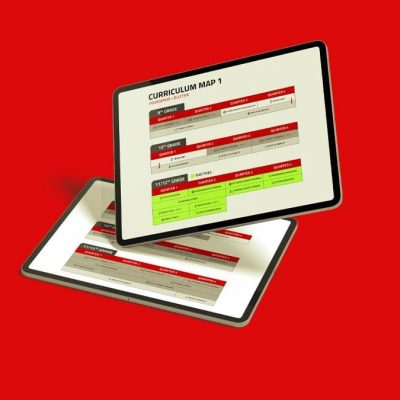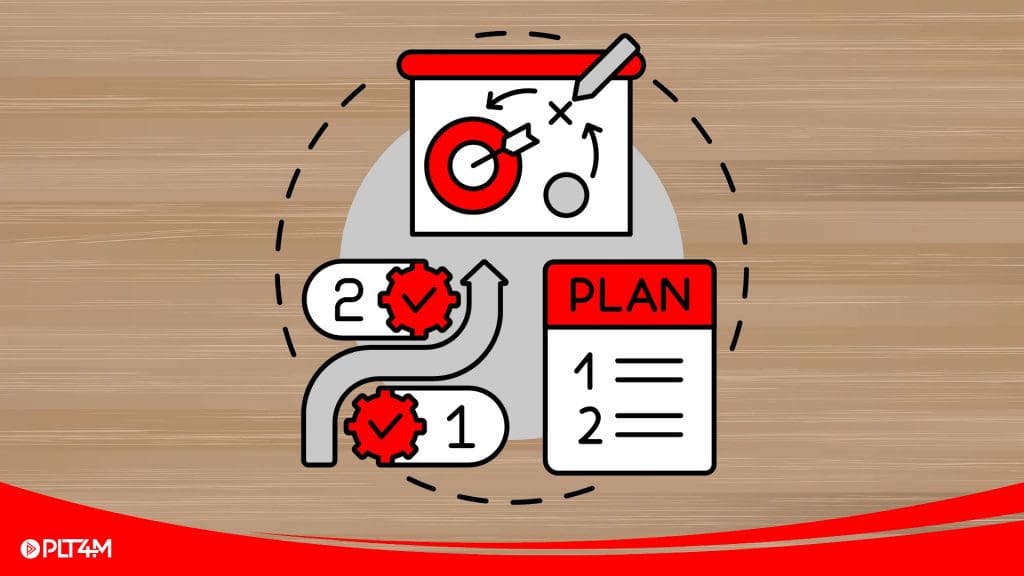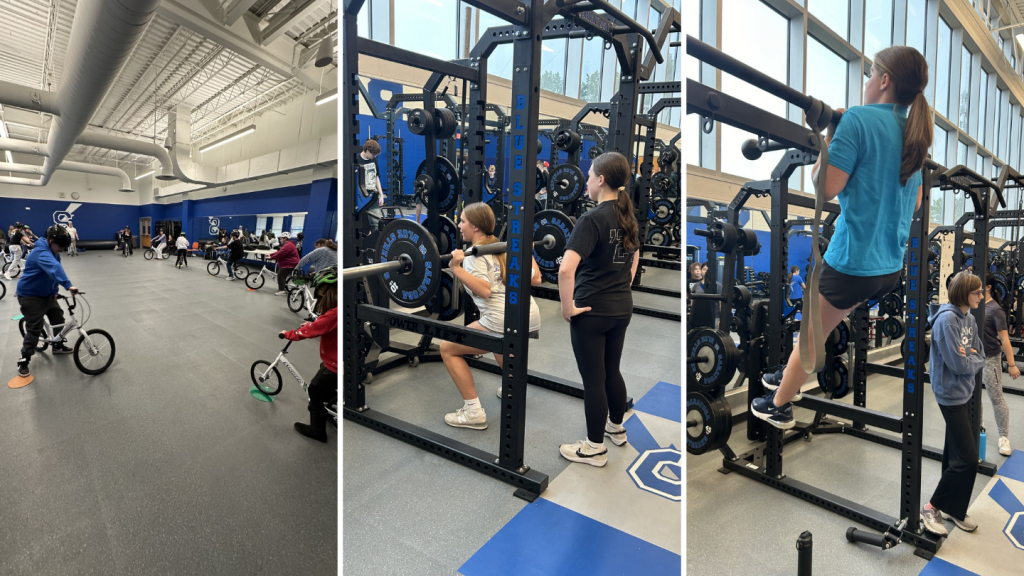The high school physical education curriculum plays a critical role in shaping students’ long-term relationship with health and fitness. For many, high school physical education class marks the final formal experience with structured physical education before transitioning to an independent, active lifestyle beyond the walls of school.
That’s why it’s essential to prioritize and plan a high school physical education curriculum that not only teaches the foundational elements of health and wellness but also encourages student choice, autonomy, and exposure to a wide variety of activities.
In this article, we’ll unpack what it means to create a meaningful and lasting high school physical education experience that empowers students for a physically active lifestyle for years to come.
Importance of High School Physical Education Curriculum in an Age of Activity Decline
The high school physical education curriculum is more important than ever. As physical activity rates decline, schools must step up—not step back.
A National Wake-Up Call (That Keeps Calling)
The 2024 U.S. Report Card on Physical Activity for Children and Youth gave the nation a D– in “Overall Physical Activity.” This poor grade reflects a troubling trend. While 26–42% of children ages 6–11 meet activity guidelines of 60 minutes of physical activity per day, that number drops to just 15% for teens ages 12–17. Even among high schoolers, activity declines from 27% in 9th grade to 21% in 12th grade.
That means only 1 in 5 high school students are meeting the 60 minutes of physical activity guidelines!
Despite this, more schools are allowing students to opt out of PE. Some districts lower graduation requirements, citing sports or outside activities as enough. But the national data tells a different story—most students are not getting enough activity anywhere.

Equity and Access Matter
Not all students have equal access to physical activity. PE is often the only consistent opportunity for personal fitness, especially during the school day. When schools remove or reduce PE, they unintentionally widen the gap for underserved groups.
The data highlights these disparities:
Gender gaps: Only 32% of high school males meet daily physical activity recommendations—yet just 17% of females do (YRBSS 2023). This shows we are especially underserving girls.
Racial and ethnic gaps: Physical activity levels also differ by race and ethnicity. Just 23% of non-Hispanic White youth meet daily activity recommendations. That number drops to 17% for both Black and Hispanic youth, and just 14% for Asian youth (NSCH 2021–2022).
A strong, inclusive PE curriculum can help close these gaps. Without it, we risk leaving behind those who need support the most.
The Bigger Picture
Low activity isn’t just a health concern—it impacts academic achievement, mental health, and overall student well-being. Schools that cut back on PE are overlooking a powerful tool for improving focus, mood, and long-term success.
Read more on these specific overlaps between physical activity, physical education, and varying aspects of health below:
A Call to Action
We must take a hard look at our high school physical education curriculum. PE teachers can’t do it alone. Curriculum directors, principals, superintendents, and guidance counselors all have a role to play. Together, we can ensure every student gets the chance to build a lifelong foundation of physical wellness.
Responsive High School Physical Education Curriculum
With a clear call to action, a quality high school physical education curriculum must become a cornerstone of every school—regardless of physical education requirements. Even if PE credits are limited, schools can still promote and provide meaningful fitness and wellness opportunities at every grade level.
Collaboration is Key
Creating a responsive curriculum takes teamwork. School leaders—including PE teachers, curriculum directors, principals, and counselors—must work together to build a program that reflects the needs of today’s students.
Many of the most successful high school PE programs begin by listening. They survey students, identify interests, and uncover gaps in current offerings. This data-driven approach helps schools craft a curriculum that’s not only relevant—but also engaging and inclusive.
Choice Drives Engagement
When student experience and interest are prioritized, they’re more likely to participate—and stick with it. That’s why responsive programs go beyond traditional team sports to include a variety of options, such as the following:
Weight training and strength development
Yoga and Pilates
Lifetime activity fitness and recreational activities
Team and individual sports
Dance, mobility, and recovery-based sessions
These electives provide students with choice, voice, and ownership in their physical education journey. Whether a student is preparing for college athletics or just looking to stay active and healthy, there’s a place for them in a responsive high school physical education program.
The Foundational Focus Of Quality High School Physical Education Curriculum
While choice and options are key to a high school physical education curriculum, many schools start by ensuring a strong physical fitness foundation is built in 9th grade. At a high level, 9th-grade physical education classes can help not only expose students to future electives and options but also introduce concepts like muscular strength, cardiovascular endurance, and so much more.
Just look at the physical education program at Saratoga Springs High School in New York. After making the shift to elective based PE for 10th-12th graders, the team of PE teachers knew that 9th grade was key in helping students see the different paths within the quality physical education program.
Every 9th grader at Saratoga Springs High School now takes an Intro to PE course that introduces students to the basics of fitness while allowing them to sample a wide array of activities available in future electives.
PE Department Chair Kelsey Allen explains that this course has not only helped students build general confidence in physical activity but also changed perceptions of who participates in different electives,
“When we first started our elective model, there was a stereotype or assumption about what type of course students would sign up for. But through exposure in the 9th-grade course and students talking about the different options, you now see a broad range of students in everything from Adventure Ed to Strength and Conditioning.”
But What About the Actual High School Physical Education Curriculum?
While there are many paths a school can take when it comes to high school physical education curriculum, having access to the right content and materials is critical. This is where PLT4M serves as a comprehensive solution to support both educators and students.
PLT4M provides schools with a wide range of ready-to-use curriculum resources tailored to modern physical education. Whether a school offers foundational fitness, in-depth health education, sport-based modules, weight lifting, yoga, personal fitness, or game-based electives, PLT4M has it covered.
Rather than relying solely on hard-working PE teachers to plan and prepare everything from scratch, PLT4M empowers educators with high-quality, standards-aligned content that reflects the changing needs and interests of students.
For schools that are ready to take their high school physical education curriculum seriously, PLT4M is the top solution loaded with hundreds of lesson plans. It helps ensure that PE isn’t just another box to check—but a meaningful and lasting part of every student’s high school experience.
Better yet, PLT4M is aligned to the Shape America National Physical Education Standards!
Curriculum Mapping Playbook!
Discover successful strategies for vertically aligning your PE curriculum and providing a more engaging experience for students!

Key Takeaways On High School Physical Education Curriculum
Promoting lifelong physical activity starts in high school. The high school physical education curriculum is not just about earning credits—it’s about creating opportunities for every student to build a foundation for a healthy, active life.
By shaping the PE experience around choice, voice, and variety, schools can foster greater engagement and meet students where they are. Through electives and responsive programming, we can ensure that all students—not just athletes or fitness enthusiasts—feel included, capable, and empowered.
When we design physical education with purpose and flexibility, we see powerful outcomes across the board:
Improved physical health through consistent movement and fitness education
Better mental and emotional well-being thanks to reduced stress and increased confidence
Stronger academic performance linked to physical activity and cognitive function
Greater equity by reaching all students, regardless of background, ability, or access outside of school
Lifelong habits that extend far beyond high school
It’s imperative—now more than ever—that we step up and support high school physical education in meaningful ways. PLT4M is proud to partner with schools across the country that are rethinking and revitalizing PE to meet the needs of today’s students and tomorrow’s adults.
FAQ
What types of high school physical education activities do you cover?
Our ever-growing library of original content includes a variety of programs intended to spark lifelong physical literacy. Check out the options below:
Does PLT4M have elementary physical education curriculum?
Yes! PLT4M has elementary physical education curriculum. Check out some of our free sample elementary pe lesson plans!
Does PLT4M have middle school physical education curriculum?
Yes, PLT4M has middle school physical education curriculum.
Does PLT4M have health curriculum?
Yes, PLT4M has health education curriculum.








